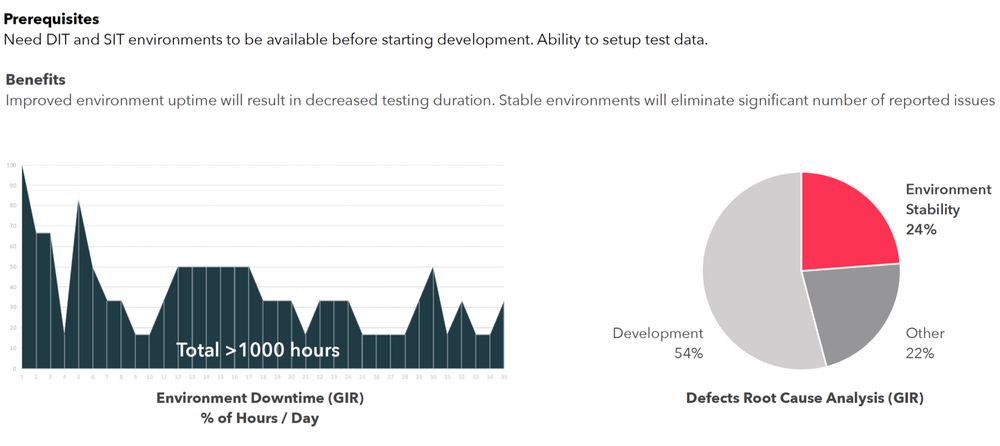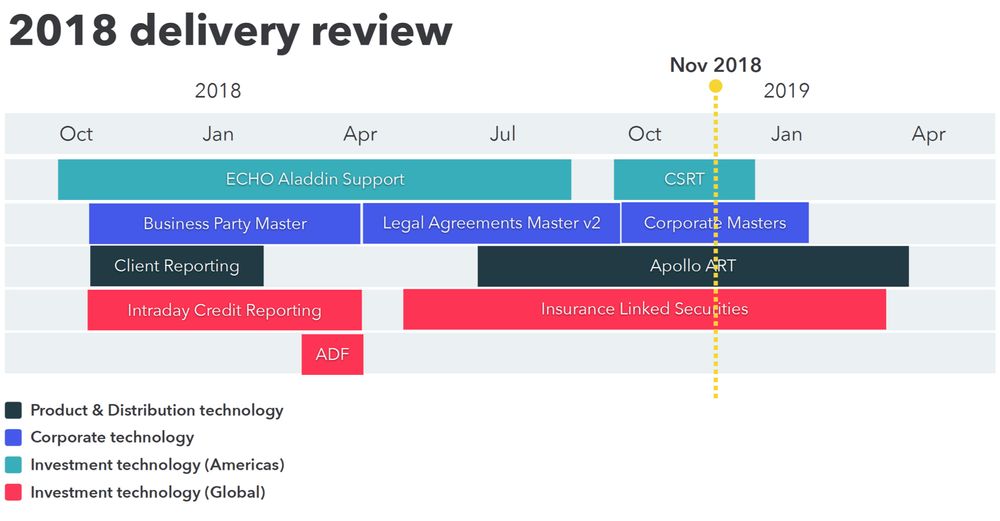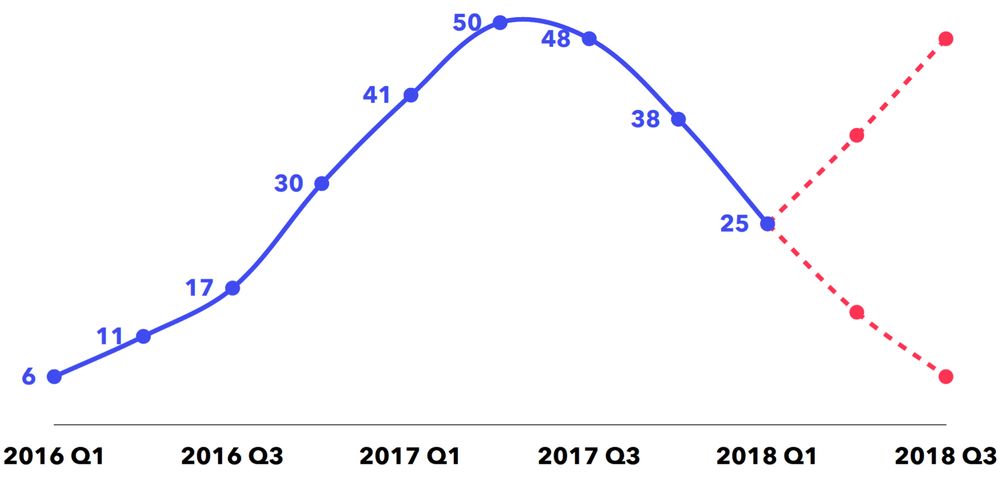Host a State of the Union
A state of the union is a planning and retrospective event for the account. The SOTU brings Devbridge executives, working teams, and client stakeholders together to reflect on work to date and discuss future opportunities, and also facilitates Devbridge to make strategic contributions to process optimization.
Target hosting four state of the union sessions throughout the year for your accounts. Because of scheduling conflicts, you will realistically end up with somewhere between two and three. The SOTU aims to do the following:
- Retro: Review to-date projects, show short demos, and recommend process improvements.
- Train: Share industry best practices, landscape changes, etc.
- Plan: Discuss account roadmaps.
- Sell: Demonstrate unseen prototypes, new services, etc.
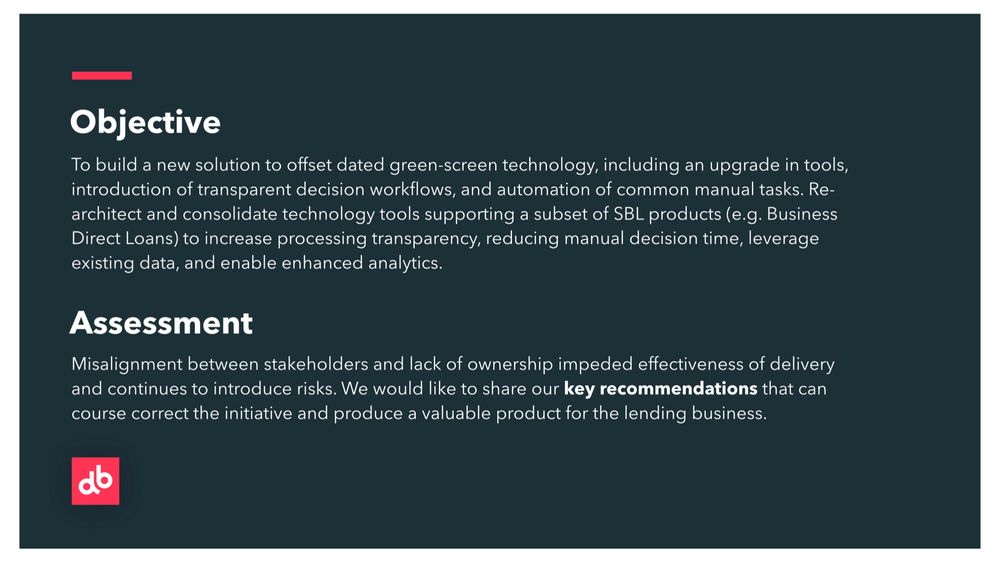
Scheduling and attendees
At a minimum, the SOTU requires an hour of time from key stakeholders and sponsors within the account. If time allows, schedule a half workday session to include value-creating activities such as heuristic analysis, landscape review, process training, or best practices. While the content of these sessions varies, the objective is to create additive value benefiting the shipment of the product. Communicate the planned agenda ahead of time and inform the client there’s value in the session.
For example, in a SOTU with one of our clients, a stakeholder said that working with us allowed him to model delivery methodology and tech organization around a template that was already established and working. He was not looking to experiment; he wanted results. Additionally, our work across multiple groups within his company gives us a wider perspective that we used to drive recommendations, standardization, component reuse, and more.
Be explicit about the agenda and outcomes of the state of the union. Senior executives have little time, so this needs to be a highly valuable session they look forward to.
One of our best practices is to give an executive one or two clear asks by the end of the SOTU. Stay focused on a key ask that makes everyone’s life easier and more productive. Involve the Devbridge team. Invite participants from all Devbridge practices to uncover opportunities to surprise and delight the client. Consider what each discipline offers to strengthen the product and the partnership and determine how to present the offerings.
Structuring the SOTU session
Create a SOTU deck using our template. Break down the content into four sections: delivery retrospective, process, portfolio planning, and some type of sales pursuit. Structure the session as follows:
Delivery retrospective
Review the engagements in progress and completed. Cater the contents so that they are relevant to the stakeholders in the room. Focus all case studies, UI samples, architecture documentation, successes, and failures to remarket our services. In most sessions, stakeholders inside an organization are not necessarily aware of the work effort, so this is a great opportunity to cross-pollinate.
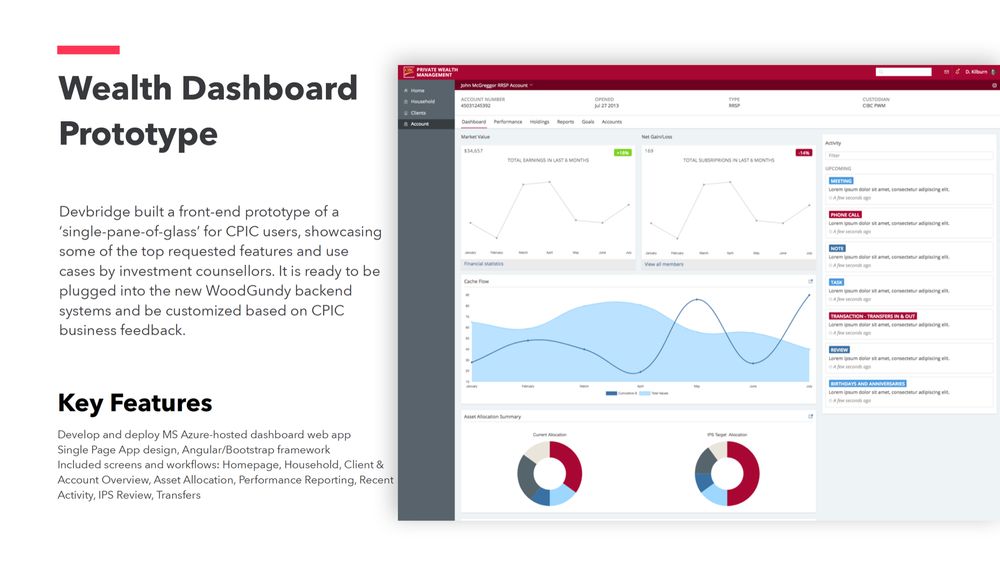
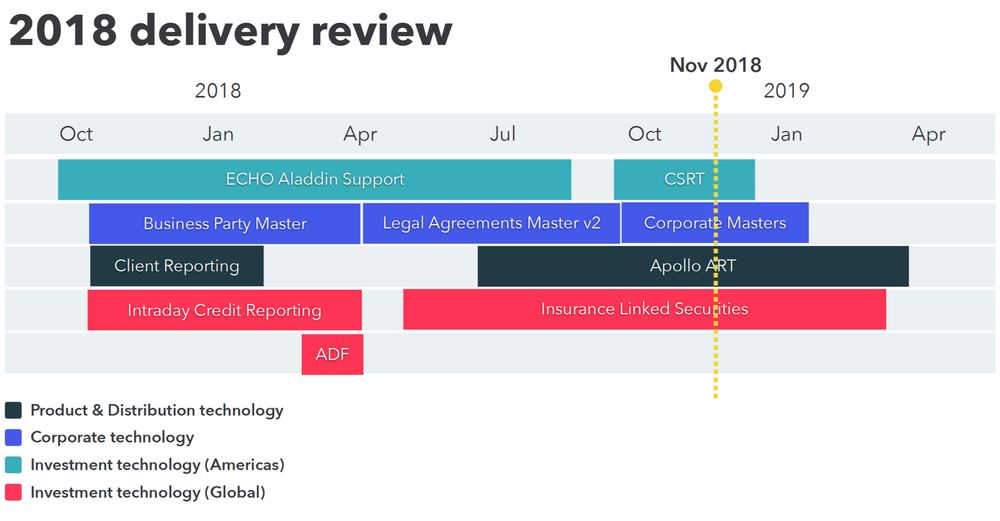
Visualize the size of the team over time and across engagements, including pictures of the team to build a narrative around the journey. Use the opportunity to showcase that we’re real people, executing real work.
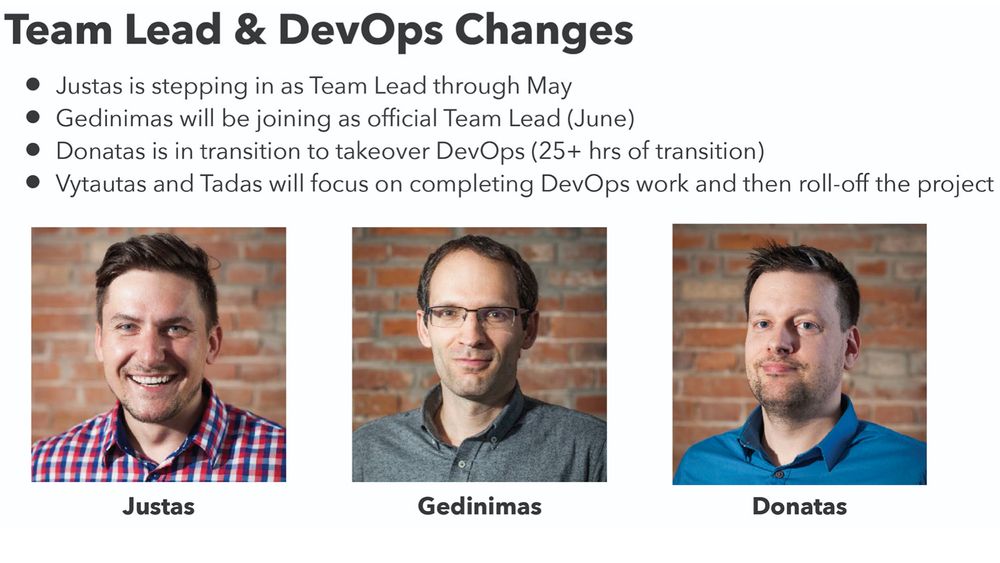
Remember the audience of the session when identifying key changes to the workflow. The team can resolve most of these in their sprint-based retrospectives, but there will be items that are outside their influence yet critical to success. Always propose a solution—do not point fingers. Devbridge is there to take ownership, not deflect blame.
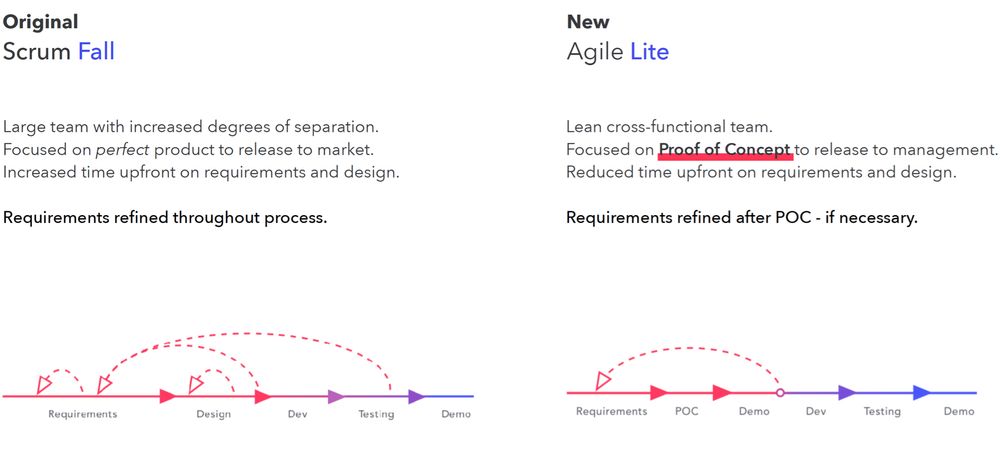
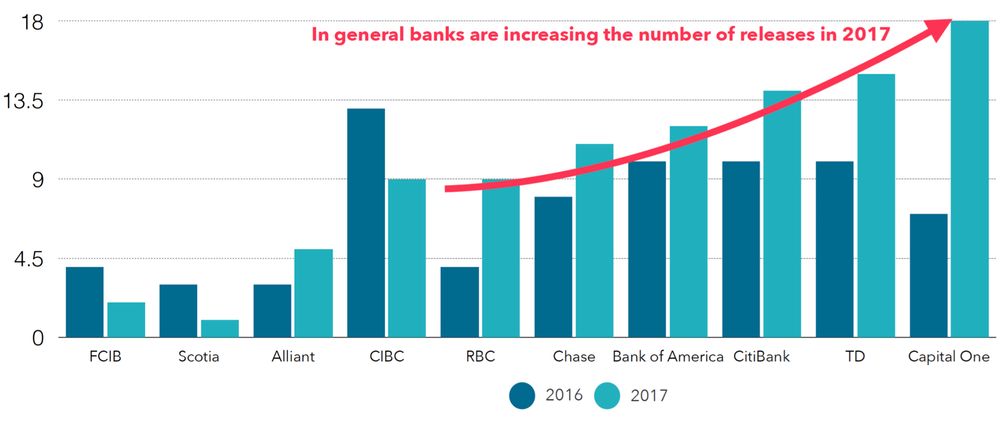
A great practice is to identify the positive and negative deltas experienced during the last six months. Things that went better than planned as well as areas where we struggled. Perform a root-cause analysis for each and inform future behavior. In follow-up SOTU sessions reflect on previously established deltas and capture progress.
Create a slide for each delta that includes
- a clearly stated challenge and resulting impediments; and
- recommended and/or implemented change to remove impediments.
Process and capability education
Take the opportunity to advance product maturity in the client organization. Topics may range from Agile best practices to new emerging services (such as service design) to advanced tactics for a given discipline (e.g. advancing testing strategy for an existing product).
For example, a bank client was performing acceptance testing outside the sprint, often months after definition of done was reached at Devbridge. This led to a disconnect between original scope, assumptions, acceptance criteria, and overall high burden of resolving feedback provided from UAT. To remedy these challenges, we sent our director of testing to the state of the union and had her present the best practices of software testing in light of that experience. It led to an extremely effective training session and a change in process within the bank. Future engagements integrated client testing to within the sprint.
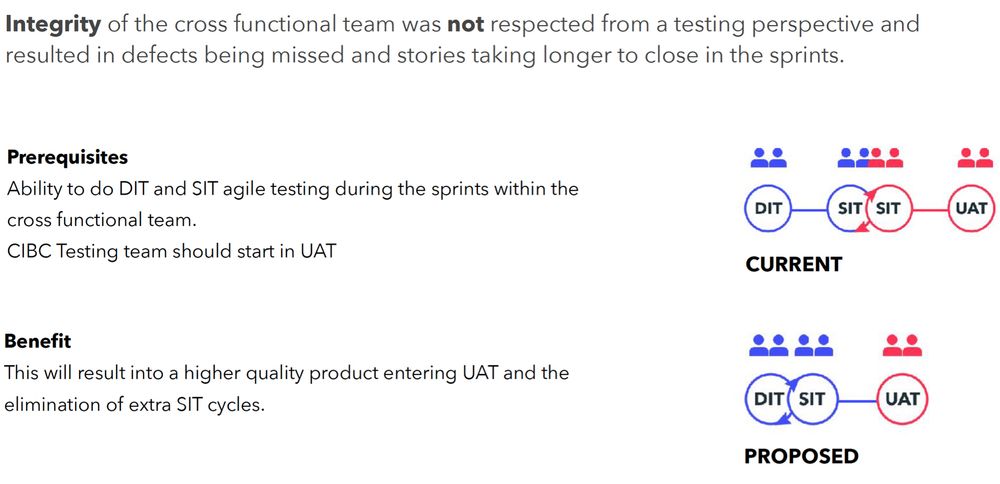
In another instance, Devbridge trained a client’s executive team on the value of DevOps, again using our implementation plans to visualize the amount of savings for using a standard CI/CD process. For this particular client, we established uptime logging for a web service dependency and demonstrated how much downtime the service experienced in the preproduction environment owing to lack of CI/CD. Improving this process allowed our team to increase our velocity and ship more product in less time.
Using this mind-set works across all disciplines: design can educate the client on the value of research; product managers can improve roadmap-planning capabilities; engineering can advance technical maturity.
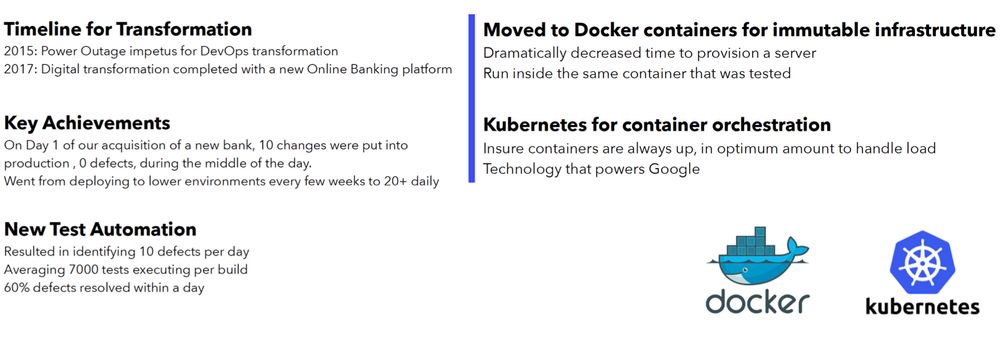
If the client agrees with the assessment and is open to the changes, consider establishing a scorecard that tracks the state of the change. Reference and reuse the scorecard for each SOTU as well as a tool to influence staff outside the executive circle.
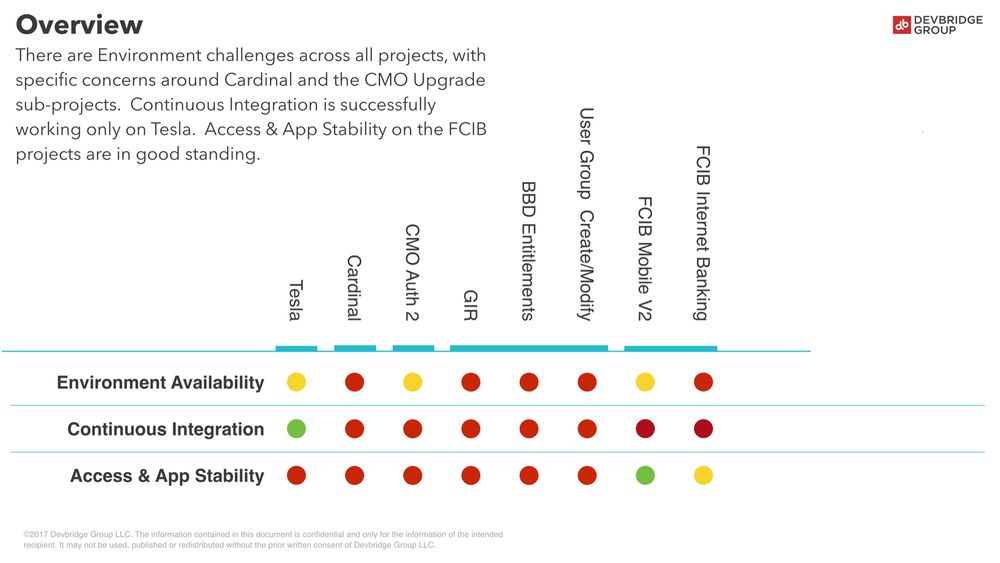
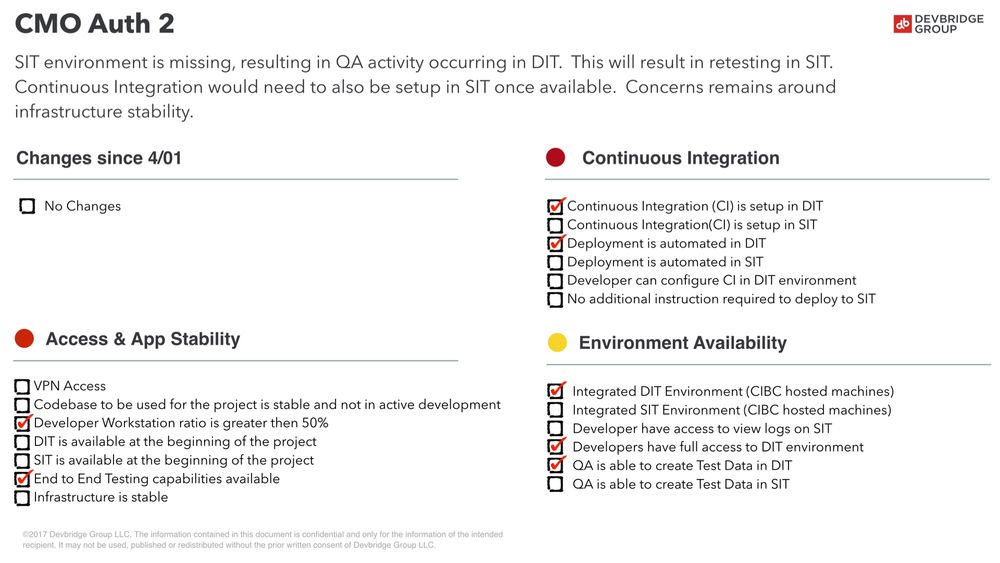
Portfolio planning
Our teams build up domain expertise during delivery. The customer journey, process documentation, and even individual relationships with client stakeholders all contribute to higher throughput—enabling smarter, faster, and smoother delivery. Continuity and team retention are incredibly valuable for both the client and us. The client benefits from high productivity, and we have predictable allocation and utilization throughout the year.
Make the client aware of the built-up domain expertise in the team. Retaining the team on the account dramatically improves throughput and eliminates onboarding and offboarding costs.
Stress the importance of team retention (underscoring the significance of domain knowledge retention) during a retrospective to plan the roadmap for the next several quarters.
The portfolio-planning exercise can be as involved and elaborate as an ideation/prioritization workshop (hint: consider this when scheduling) or as casual as discussing areas of opportunity within the organization. In either scenario, the managing director
- identifies clear, funded opportunities, and
- establishes the next steps to pursue said opportunities.
Always hunt, even if the opportunity is yours to lose.
Often, the best ideas come from the working team—the client’s employees or Devbridge’s own. Stay alert during project delivery and capture farfetched ideas in a separate “wish list” backlog—it will come in handy during a state of the union. Even if discussions don’t generate more immediate work, showcase a few of the farfetched ideas from the product backlog and tease a future that could be. Which brings us to . . .
Pitch a prototype
The working team is in the best position to identify clear opportunities in terms of future product roadmaps. There’s always more to be done—features to be shipped. Proactively explore future features during the SOTU using an interactive prototype, industry competitor analysis, and/or landscape review. Expand on the existing product or ideate around complementary offerings to the main roadmap using emerging technologies (e.g., an area of opportunity in the client’s service map for a technical solution that lowers costs, increases stickiness, or helps the client sell more product).
Produce and present a video of the team discussing the prototype, the opportunity, and the upside—that video can be used as a tool to remarket outside the executive team and potentially win over new sponsors.
Ask for what you need
Summarize the state of the union with one clear, short ask of the key sponsor or stakeholder. Know who the client’s change agents are—the rebels of the enterprise—and get them to commit during the session to sponsor the change and leverage their name to push the agenda inside the organization. The better the ecosystem Devbridge creates, the more product shipped, for less money. Everybody wins.
Here are a few examples of asks we’ve made in the past:
- Local machines to develop on (instead of remote VMs). Don’t ask, but the client thought it was a viable option initially.
- Include client user acceptance testing as part of sprint delivery. Previously was performed a month later, resulting in a significant amount of churn.
- Stable test environments. Previously would experience erratic downtime, lengthy manual rebuilds.
- Ability to perform user testing with customers. Previously not leveraged as a technique to collect feedback from the field.
- Team composition changes. A single client contributor was resisting mature engineering best practices such as code reviews.
